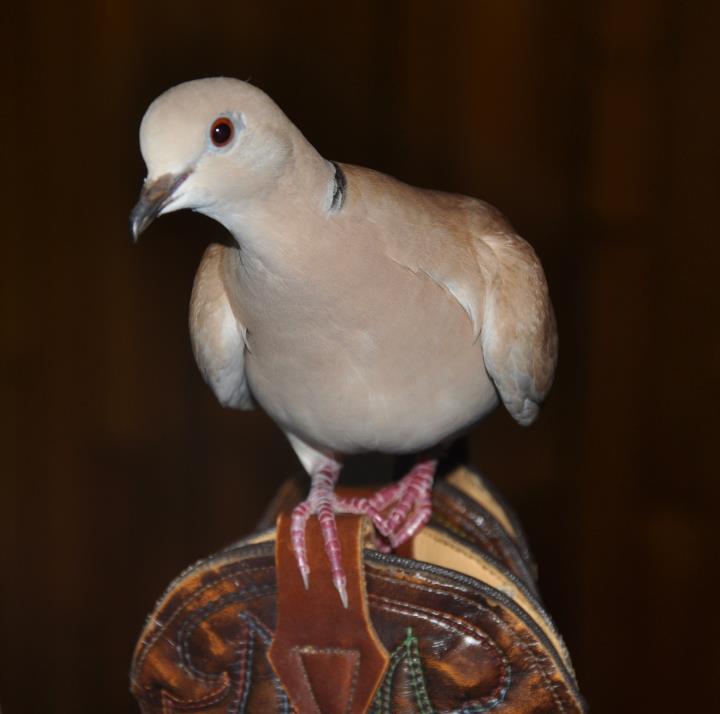- Feb 16, 2012
- 6
- 0
- 7
My dove Smurffy
Ringneck doves
The Ringneck Dove is easily the most commonly kept dove in captivity. This domesticated bird (Streptopelia risoria) descends from the African Ring Dove (Streptopelia roseogrisea). This bird is about 12" from tail to head. The original wild coloring is quite beautiful as are the over Forty aknowledged color mutations/combinations http://www.dovepage.com/species/domestic/Ringneck/ringneckcolorlist.html. The Wild colored bird has brown and grey feathers on the back and wings with a rich rose colored head and breast and a black neck ring.
Other Names:
Collared Dove, Barbary Dove, Domestic Ringed Dove
Subspecies: [FONT=Arial, Helvetica, sans-serif]None[/FONT]
Natural Habitat:
[FONT=Arial, Helvetica, sans-serif]Only in captivity.[/FONT]
Status in Wild: This species is kept only in captivity but is thought to descend from the African Ring Dove.
Other Names:
Collared Dove, Barbary Dove, Domestic Ringed Dove
Subspecies: [FONT=Arial, Helvetica, sans-serif]None[/FONT]
Natural Habitat:
[FONT=Arial, Helvetica, sans-serif]Only in captivity.[/FONT]
Status in Wild: This species is kept only in captivity but is thought to descend from the African Ring Dove.
IN CAPTIVITY
Housing: Ringnecks can be kept and bred in cages as small as 2 feet square. Males tend to be quarrelsome with other males so it is best to keep them in single pairs.
Temperatures: Ringnecks are a hardy bird. If slowly acclimated and protected from the elements, they can take below freezing for a moderate period of time.
Feeding: Ringneck doves do well on a diet of various grains and seeds including millet, milo, wheat, black sunflower, canary grass, safflower and cracked corn. A quality wild bird seed mix is excellent, or commercial dove mixes may be purchased from many local feed stores. As with all seed-eating doves a quailty, high-calcium grit should be offered as well.
Breeding: http://www.dovepage.com/species/domestic/Ringneck/ringneckbreeding.html
Numbers: Ringnecks are surely the most commonly kept dove in the world. Estimating a number would be impossible and would likely be in the hundreds of thousands worldwide.
Hope you have enjoyed the facts about Ringneck Doves source link
http://www.dovepage.com/species/domestic/Ringneck/ringneckdove.htmlHousing: Ringnecks can be kept and bred in cages as small as 2 feet square. Males tend to be quarrelsome with other males so it is best to keep them in single pairs.
Temperatures: Ringnecks are a hardy bird. If slowly acclimated and protected from the elements, they can take below freezing for a moderate period of time.
Feeding: Ringneck doves do well on a diet of various grains and seeds including millet, milo, wheat, black sunflower, canary grass, safflower and cracked corn. A quality wild bird seed mix is excellent, or commercial dove mixes may be purchased from many local feed stores. As with all seed-eating doves a quailty, high-calcium grit should be offered as well.
Breeding: http://www.dovepage.com/species/domestic/Ringneck/ringneckbreeding.html
Numbers: Ringnecks are surely the most commonly kept dove in the world. Estimating a number would be impossible and would likely be in the hundreds of thousands worldwide.
Hope you have enjoyed the facts about Ringneck Doves source link






